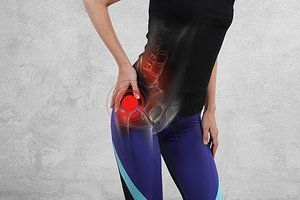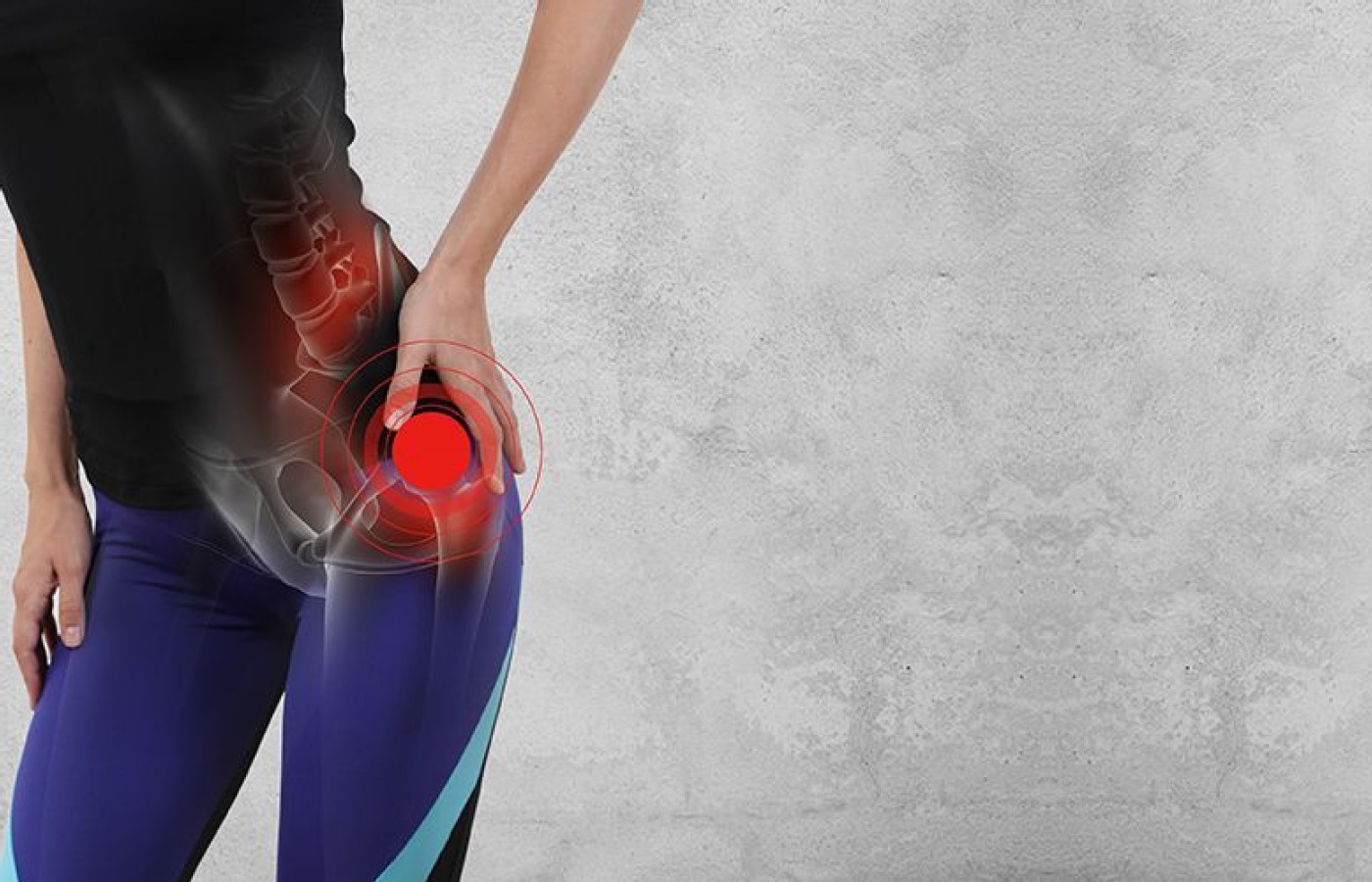Recent laws in New Jersey and California represent a disturbing trend that will negatively impact a practice’s ability to collect monies from patients, as well as expose them to significant penalties if the practice does not follow the mandatory guidelines to a T. Please be aware that a similar law may be coming to your state. The time to act is before the law is passed.
The Nutritional Secret to Resolving Hip Arthritis?
Hope for surgicophobes with bone-to-bone hip joints! About five years ago, I encountered a catch in my right hip joint that prevented me from going all the way into a piriformis stretch. I found that I could work through the catch if I did clockwise (from my perspective) circumduction to get into the stretch position. So, I did that regularly, thinking that the tissue that was catching would smooth out, the joint would heal, and it would go back to normal function.
But instead, I progressed into discomfort deep inside my groin. After a few months, an X-ray showed that I was bone-to-bone on the medial-inferior margin of the ball joint, with corrugations on the opposing margins of bone (a bad sign). For about six months, I tried getting my hip adjusted by a chiropractor colleague who is good at that, and doing range-of-motion exercises on my own, but it continued getting gradually worse.
Trying a Supplement Approach First

Realizing I was headed for an artificial joint, I got the Veterans Administration to authorize an autologous stem-cell transplant with an outside-the-VA doctor adept at knees. However, I decided to first try everything I knew nutritionally.
I started doing all the usual stuff – 2,000 mg glucosamine, 1,000 mg MSM, 2,000 mg calcium-magnesium, 5,000-10,000 IU vitamin D, and a multivitamin-multimineral supplement I use because it improves spinal function. That combination helped a little.
Meanwhile, I was thinking about a treatment that had worked on dogs, but made me nervous because it involved high doses of selenium, which can cause serious toxicity in overdose.
Good for Dogs, Good for Humans?
A decade or more earlier, I had read that the New Zealand Veterinarians were using progressively higher doses of selenium for hip dysplasia in dogs "until the problem went away." Went away? I had never heard of hip arthritis problems doing anything but getting gradually worse until surgical hip replacement was done!
And then, about a year before my hip started bothering me, a friend asked me if I knew anything that might help his Rottweiler, who wouldn't jump into the back of his SUV anymore because of hip pain. I told him about the New Zealand veterinarians, and suggested he try feeding his dog gradually higher doses of selenium. A few months later, he thanked me and said that his Rottweiler was now jumping into the back of his SUV again and seemed to be free of pain.
I asked my friend how many of the standard 200 mcg pills he was giving her a day. He said three or four. As the dog probably weighed 125 pounds, I took a deep breath, made an educated guess and added 800 mcg/day of selenium to the cocktail of supplements I was taking each day. That made a substantial improvement within a month, and within about three months I was generally symptom-free.
I forget to take all that stuff when I don't hurt, but if the pain comes back to remind me, I get back on my cocktail of supplements again, and my hip soon feels better again. I've been generally running without pain ever since, and don't seem to have a distance limitation, having done a couple 100-mile runs, a few 75-85-mile runs, a 120-mile six-day run, a few 100K runs, and a pleasurable mix of races and training runs from 10K to 50 miles.
Selenium Dosing: Remember to Adjust for Weight
A year or so ago, I found out that our government says the highest safe dose of selenium for adults is 400 mcg/day. But of course, that 400 mcg dose has to be safe for a 100-pound adult, and I weigh twice that much. And since the amounts of any supplement, whether one is aiming for adequate, ideal or safe-maximum levels, are always proportional to body weight, I had fortuitously, with my guessing, chosen exactly the concentration of selenium in my 200-pound body as the FDA and Institute of Medicine had set as safe-maximum for 100-pound adults.
The FDA and IOM never tell us we have to take (or can take) proportionately higher amounts of a nutrient according to how much bigger we are than their reference 100-pound person, but that's obviously the case. So, I suggest that anyone who wants to treat hip arthritis (and perhaps other arthritides) with my high-selenium cocktail should follow this formula: take 100 mcg/day for every 25 pounds of body weight. Since selenium usually comes in 200 mcg tablets, you may have to break a tablet in half to get the correct dosage. If the body being treated is in between one of those 25-pound gradients, I suggest rounding up to the next 25-pound dosage because there is a safety margin built into FDA and IOM advisories, but I'm not convinced there is a corresponding "effectiveness margin" built into my advised selenium dosages.
Practical Takeaway
When I started my high-selenium cocktail of supplements, my left medial knee articular cartilage was wearing precariously thin, and should have worn through by now and turned me into a bicyclist ... but both knees are doing just fine. Also, a friend of mine who had suffered from gradually worsening hip pain since a slip-and-fall accident maybe 20 years earlier finally got it X-rayed. He had a big, bulging mass from the pelvic bone that intrudes into the ball of the joint near the upper rim.
I told him I thought it was probably too late for a nutritional cure, but to go ahead and give it a try. He did, but after three months without progress, I advised him to seek a joint replacement. The surgeon he chose had a long waiting list, and then when COVID started, that stretched out to who-knows-when. In the meantime, he continued following my nutritional routine, hoping to stop his hip from getting any worse while he awaited surgery. He's been on it about a year now, and told me recently, "You know, I'm thinking about not having the surgery because it's getting a little better."
Those New Zealand veterinarians were really on to something, thinking that high doses of selenium might help arthritis hip joints in dogs. I wonder how they got the idea in the first place? Regardless, I'm glad they did.



